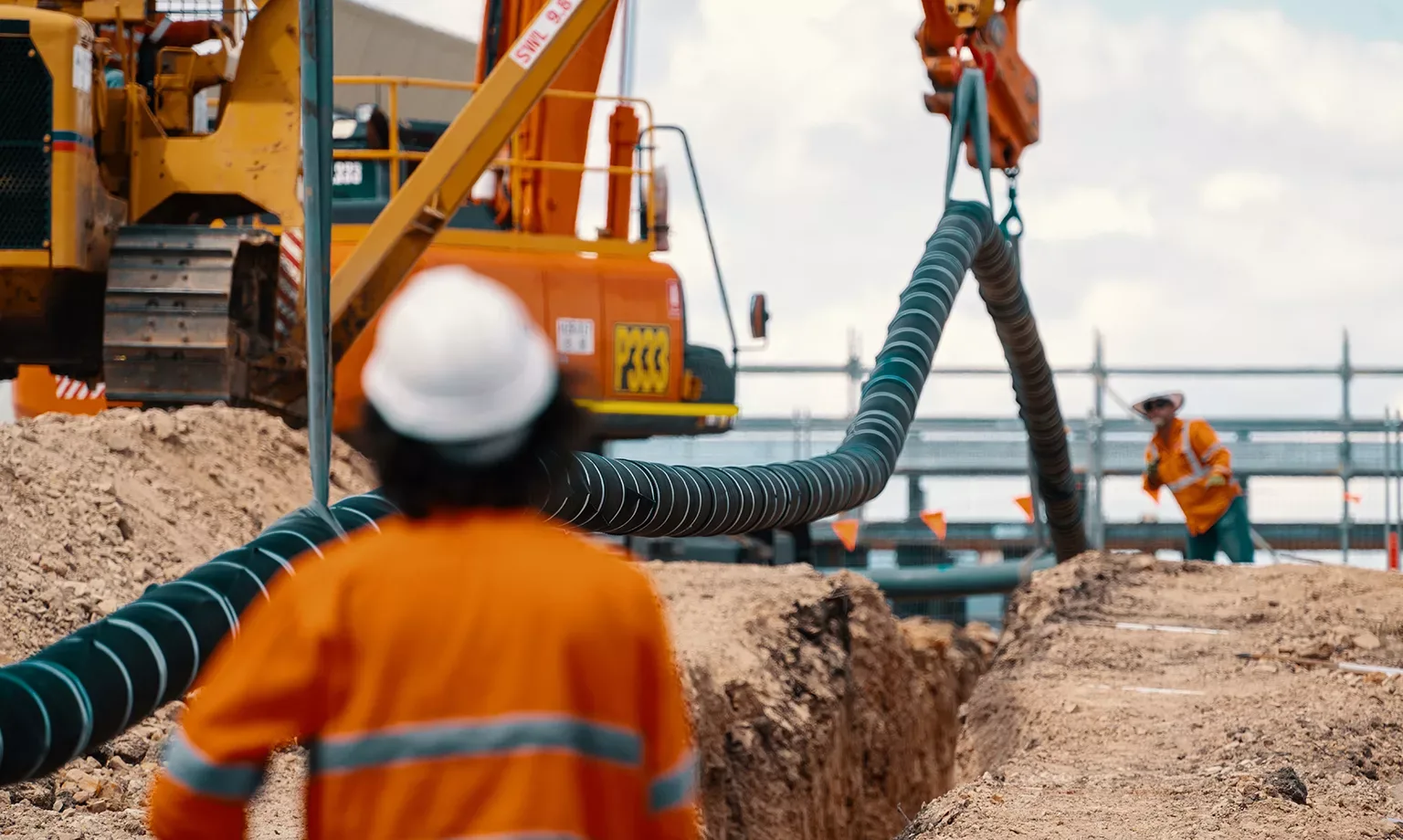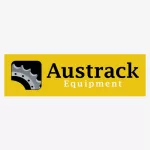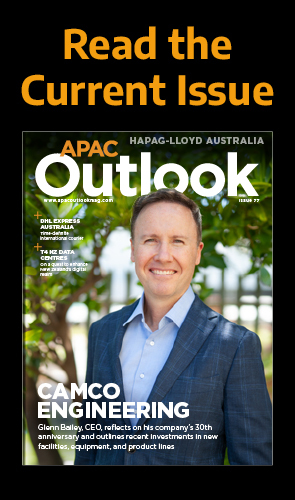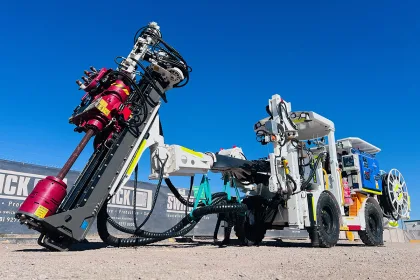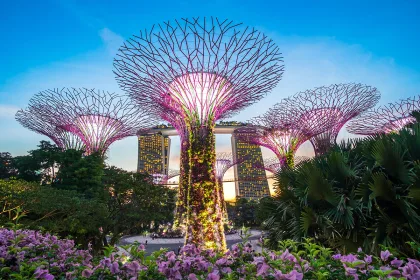A leader in pipeline construction contracting and horizontal directional drilling, Spiecapag has been operating in Australia for 40 years. We delve into four decades of Australasian pipeline projects with John Walsh, Managing Director of Spiecapag Australia.
PIPELINER OF CHOICE
When John Walsh, Managing Director of Spiecapag, first arrived Down Under in 2013, the gas industry was in the midst of an investment boom.
At the time, a wave of liquefied natural gas (LNG) megaprojects were being constructed, including upstream production, export facilities and associated pipelines.
Sustaining those heady levels of investment was always unlikely, and although there has since been a drop in new gas infrastructure investment, it has largely been counterbalanced by new investment in water infrastructure. Natural gas, however, will continue to play a key role in firming domestic electricity supply as part of the transition to net zero in many countries across the region.
Eventually, hydrogen will also be a key part of the transition, as evidenced by the AUD$127 billion pipeline of hydrogen projects that has been announced in Australia alone – and that brings with it transmission infrastructure opportunities.
“We are currently in early discussions with clients, and it will more than likely become an area of growth in the coming years,” Mr. Walsh outlines.
In the meantime, the existing resources sector remains a strong driving force of the Australian economy, and a number of new mining projects will require both energy and water supplies.
With its regional office based in Brisbane, Queensland since 2015, Spiecapag also regularly monitors how it can bring its wide experience and expertise to specialised projects in Papua New Guinea (PNG), New Zealand, as well as New Caledonia and further out into the Pacific, and northwards to serve Southeast Asia.
“We had been operating on a project-by-project basis across the region for decades before establishing a permanent operation here in Australia, and have now been active in the region for over 40 years. While we operate across the whole region, much of our business is in Australia, and also in PNG, where we have built all the major long-distance, high-pressure gas pipelines,” notes Mr. Walsh.
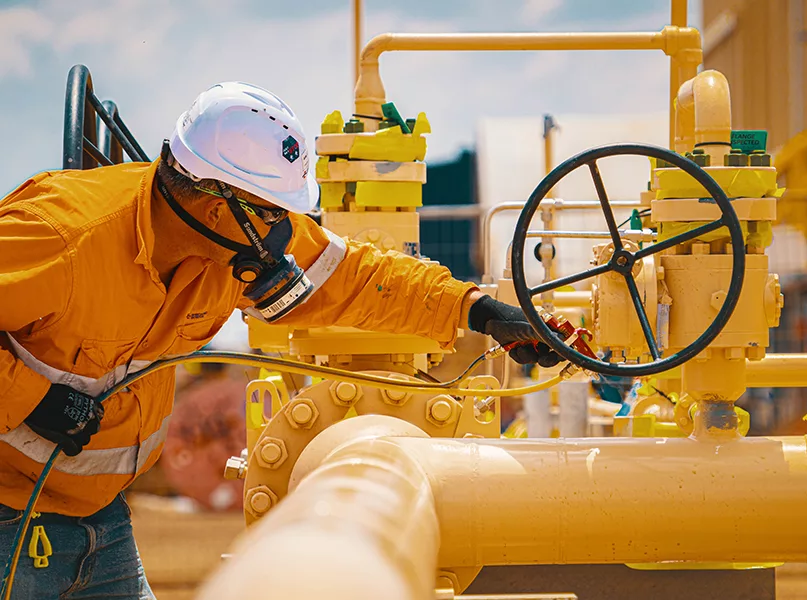
EXPONENTIAL GROWTH
Spiecapag is part of the French multinational construction conglomerate, VINCI Group, and has had an ongoing programme of work since establishing its permanent base in Australia, with four or five projects typically live at any given time.
The company has grown exponentially from just two employees to 600. With more growth in the pipeline for 2024, staff are at the core of Spiecapag Australia’s strategic focus for the business.
“We are proud to employ the most talented and experienced people in our industry, and as we grow, it’s important we continue to attract and retain key staff with various skills, abilities, and backgrounds,” Mr. Walsh recognises.
Over those years, more than 20 large pipeline projects have been constructed across the region by Spiecapag, who has since added a horizontal directional drilling (HDD) business whose work stretches into Southeast Asia, South Korea, and Japan.
HDI Lucas, the company’s HDD subsidiary, was formed in 2018 following Spiecapag Australia’s acquisition of Lucas Engineering and Construction, the leading HDD contractor in the Australian market.
“Spiecapag Australia has long worked alongside joint venture (JV) partners. This way, we focus on being best-in-class at what we do – pipelines and facilities – and work hand-in-hand with partners who bring additional expertise so that our clients can deliver more complex projects while both reducing costs and having a simpler owner-contractor interface,” Mr. Walsh explains.
“The longest-standing local JV partner we had was Lucas Engineering and Construction, a relationship built over decades which culminated in a marriage of the businesses a few years ago.”
As a result, Spiecapag Australia added another valuable string to its bow, with HDI Lucas having achieved several industry milestones both in Australia and overseas, and taking on some of the most complex and technically demanding horizontal drilling projects globally.
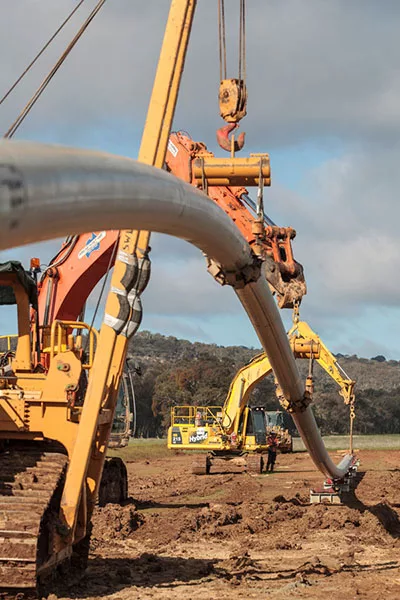
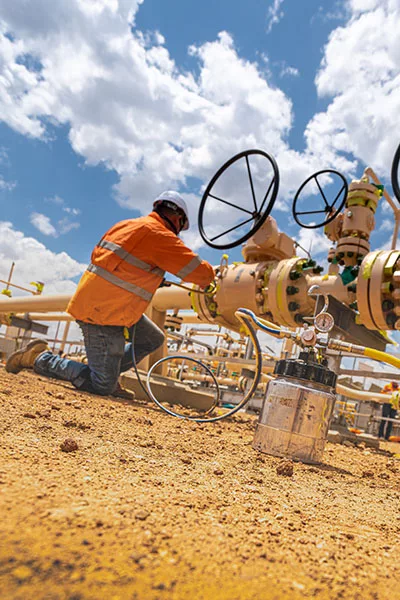
LANDMARK PROJECTS
Spiecapag Australia’s modus operandi includes identifying landmark projects that it wants to be a part of.
Locally in Australia, the company’s first project in 1982 was the Sydney-Newcastle Pipeline, where a major focus was minimising the environmental impacts on the Hawkesbury River. It was a good learning experience for the company, as those who worked on it had to negotiate many river and infrastructure crossings, as well as steep, rocky sections encompassing large boulders.
Perhaps the most memorable project of the 1990s was the Southwest Queensland Pipeline. Spanning 756 kilometres (km), it bears some similarities to the SEA Gas Pipeline, which at 687km was another long-distance project constructed by Spiecapag.
“Additional client demand for gas meant that 340km of that SEA Gas Pipeline was expanded during construction to install twin 14-inch diameter pipelines. That was a project where we were the engineering, procurement, and construction (EPC) contractor,” Mr. Walsh informs us.
Both the Southwest Queensland and SEA Gas Pipeline projects were true tests of Spiecapag’s ability to get the logistics of its remote operations right, and great examples of the importance of working with local Traditional Owners to protect the cultural heritage.
The 2000s brought the second of Spiecapag’s major projects in PNG, with more than 600km of pipelines for the ExxonMobil-led PNG-LNG project, an integrated development that includes gas production and processing facilities.
“This was another monumental test of our logistics and ability to operate in harsh, variable conditions,” states Mr. Walsh.
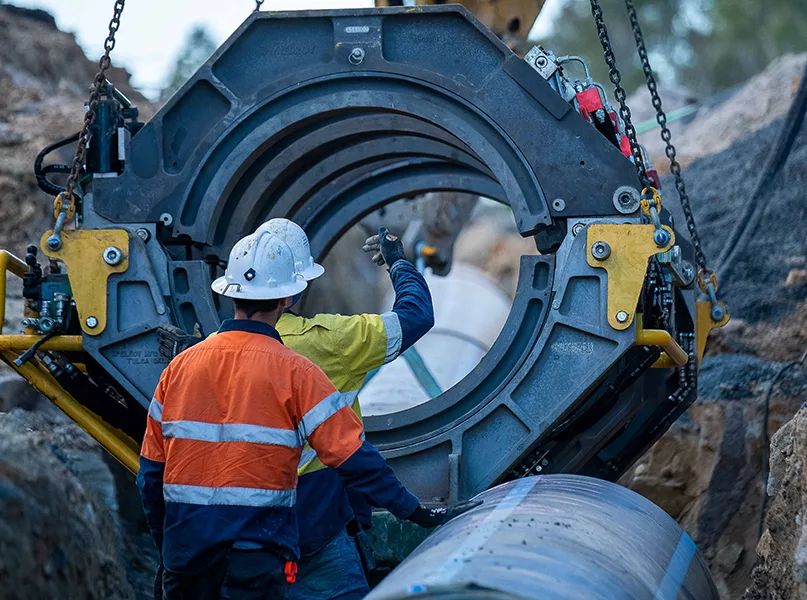
LOGISTICAL CHALLENGES
Very soon after the project was commissioned, Spiecapag started work on the Eastern Goldfields Pipeline for APA Group (APA), the first of many for the leading Australian energy infrastructure business.
At 293km, it was a comparatively shorter project, but its remote location 12 hours northeast of Perth meant logistics again played a key role in delivering ahead of schedule and maintaining a fantastic safety record and a lost time injury frequency rate (LTIFR) of zero.
“We averaged a construction rate of 5km per day, and rapidly mobilised to get the project started as quickly as possible,” Mr. Walsh tells us.
On projects in remote locations, such as the Eastern Goldfields Pipeline for APA Group, or the Northern Gas Pipeline for Jemena, Spiecapag also engages with Indigenous groups and works with the client to create economic opportunities for people from these communities.
More recently, Spiecapag constructed the Mardi to Warnervale Pipeline, which was completed during the COVID-19 pandemic for the Central Coast Council in New South Wales (NSW).
This was Spiecapag Australia’s inaugural venture into government work in Australia, and its first JV with Seymour Whyte, a sister company within VINCI Group.
“Since then, we have continued to pursue water projects with Seymour Whyte on a JV basis,” shares Mr. Walsh.
During the pandemic, Spiecapag also built an oil pipeline in the Perth metropolitan area as part of the METRONET project.
This was extremely challenging, as the Western Australia (WA) state border was shut due to pandemic restrictions, and it was virtually impossible to get in and out of WA.
“Given the specialised nature of what we do, it meant a part of our workforce basically had to move to WA,” Mr. Walsh reveals.
The pandemic era also highlighted the key role of the supply chain and the importance of building strong suppliers relationships.
“It was only a 12.5km pipeline, but due to the urban environment, 70 percent of it was installed using our in-house HDD methodology provided by HDI Lucas.”
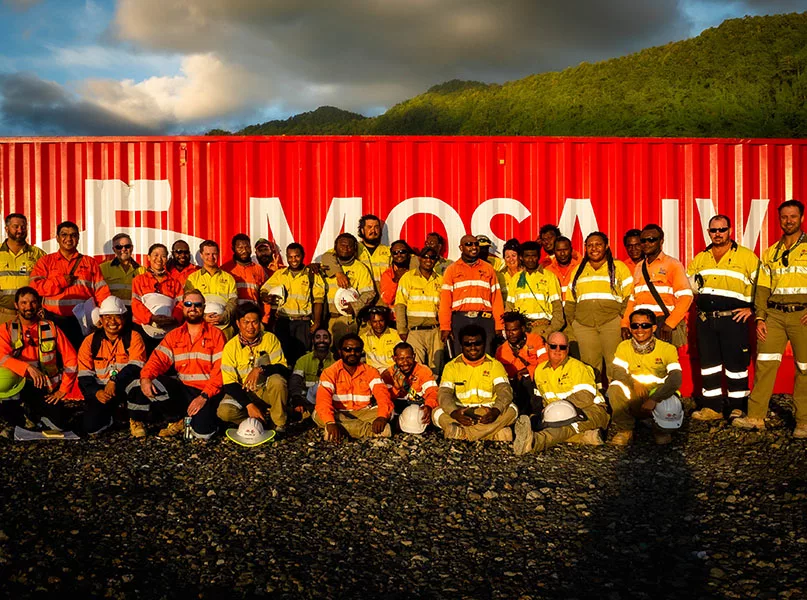
SLOPE STABILISATION
Currently, Spiecapag Australia is working on a very interesting slope stabilisation project for a mine in the New Ireland region of PNG.
In a slight departure from its core business of constructing pipelines, which is the company’s bread and butter, Spiecapag is building a 240-metre high retaining wall in a geothermally active environment, through a JV with Menard Oceania (Menard), another of its VINCI Group sister companies.
“Combining our expertise in PNG with Menard’s ground anchor specialty made for another successful JV,” acclaims Mr. Walsh.
“As part of VINCI Group, we try to leverage its capabilities and form JVs with sister companies, such as Menard, Seymour Whyte, or others further afield. However, we remain open to partnering with other players in the industry if the right opportunity comes up, and regularly do.”
In parallel, Spiecapag has teams on the ground on Barrow Island off the coast of WA, where the company is working on the shore approaches for a cable landfall as part of Chevron’s expansion of the Gorgon LNG project.
Spiecapag is also in the process of completing a 51km high-pressure steel gas pipeline in the southeast of Australia. This proved to be on a challenging suburban route, as part of the Western Outer Ring Main (WORM) project on the outskirts of Melbourne on behalf of APA.
At the same time, Spiecapag is currently mobilising to build underground facilities and a connecting pipeline linking a new gas-fired power station in the town of Kurri Kurri to the existing Sydney to Newcastle Pipeline.
This will supplement Snowy 2.0, one of the largest pumped hydro system projects in Australia, ensuring security and stability in electricity supply to support the volatility that arises from intermittent renewables.
“Our main goal for the coming year is to successfully deliver all of our projects safely, on time, and on budget to the complete satisfaction of our clients”
John Walsh, Managing Director, Spiecapag Australia
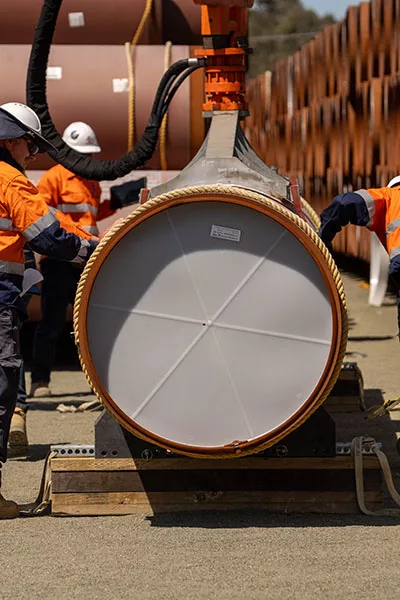
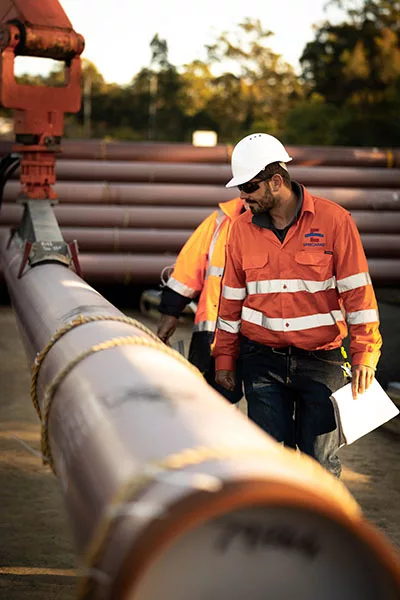
HYDROGEN AND LOW-CARBON FUELS ARE THE FUTURE
Much like natural gas, hydrogen will need to be produced and transported, as Australia casts itself as a future renewable energy superpower.
The company sees pipelines as the most efficient mechanism for its transportation, so the skillsets that Spiecapag Australia has developed over the years through its numerous gas projects are highly transferrable to the hydrogen space.
“The hydrogen production technology is still being proven, but increasingly, scale production facilities are being discussed,” Mr. Walsh says.
Spiecapag has already started working on a number of feasibility and constructability studies for hydrogen projects around Australia.
The country’s government expects hydrogen exports to be worth up to AUD$10 billion by 2040, with higher growth potential than LNG exports.
Spiecapag Australia’s HDD business, meanwhile, is equally well-positioned to support the emerging offshore wind industry.
“There are currently no offshore wind projects in Australia, but we will be watching this space in the coming years,” affirms Mr. Walsh.
Several different countries in Asia-Pacific are looking at offshore wind, and Spiecapag sees these projects as likely to benefit from the work it has done for clients across the region, assisting them to minimise the environmental impacts of bringing power onshore and on to existing transmission networks.
As transmission lines are increasingly buried, the company also expects increased HDD opportunities alongside pumped hydro, another area of growth that Spiecapag will be looking at along with its other sister companies in VINCI Group.
“Our main goal for the coming year is to successfully deliver all of our projects safely, on time, and on budget to the complete satisfaction of our clients, to ensure we maintain our position as the leading pipeline and HHD contractor in Oceania,” Mr. Walsh concludes.



